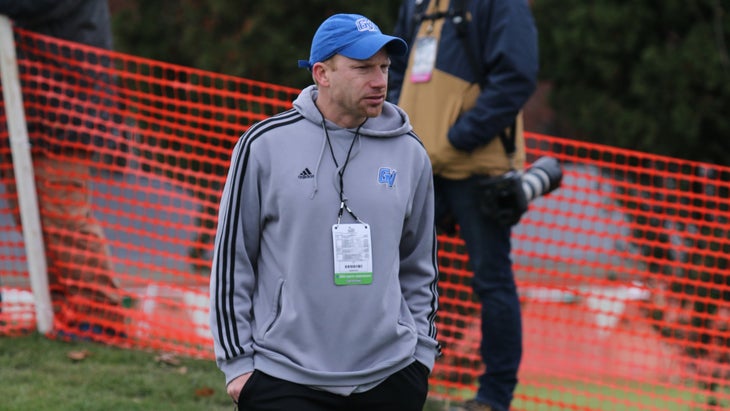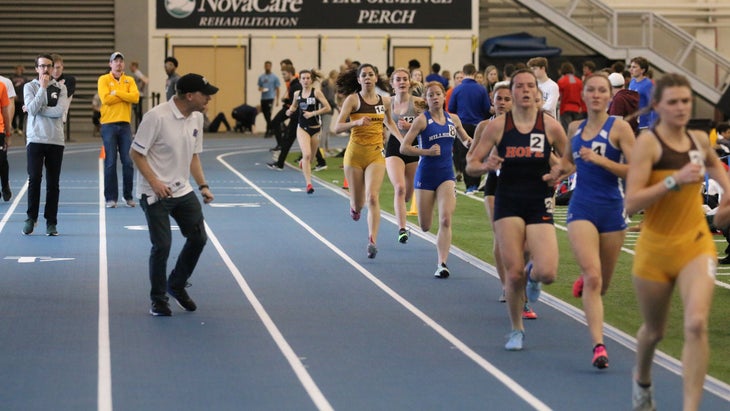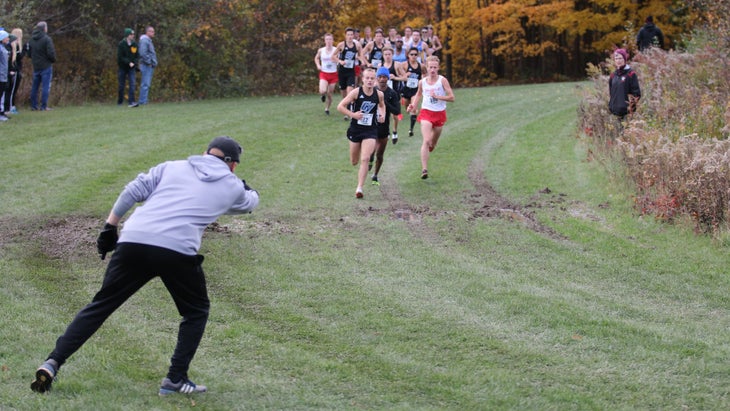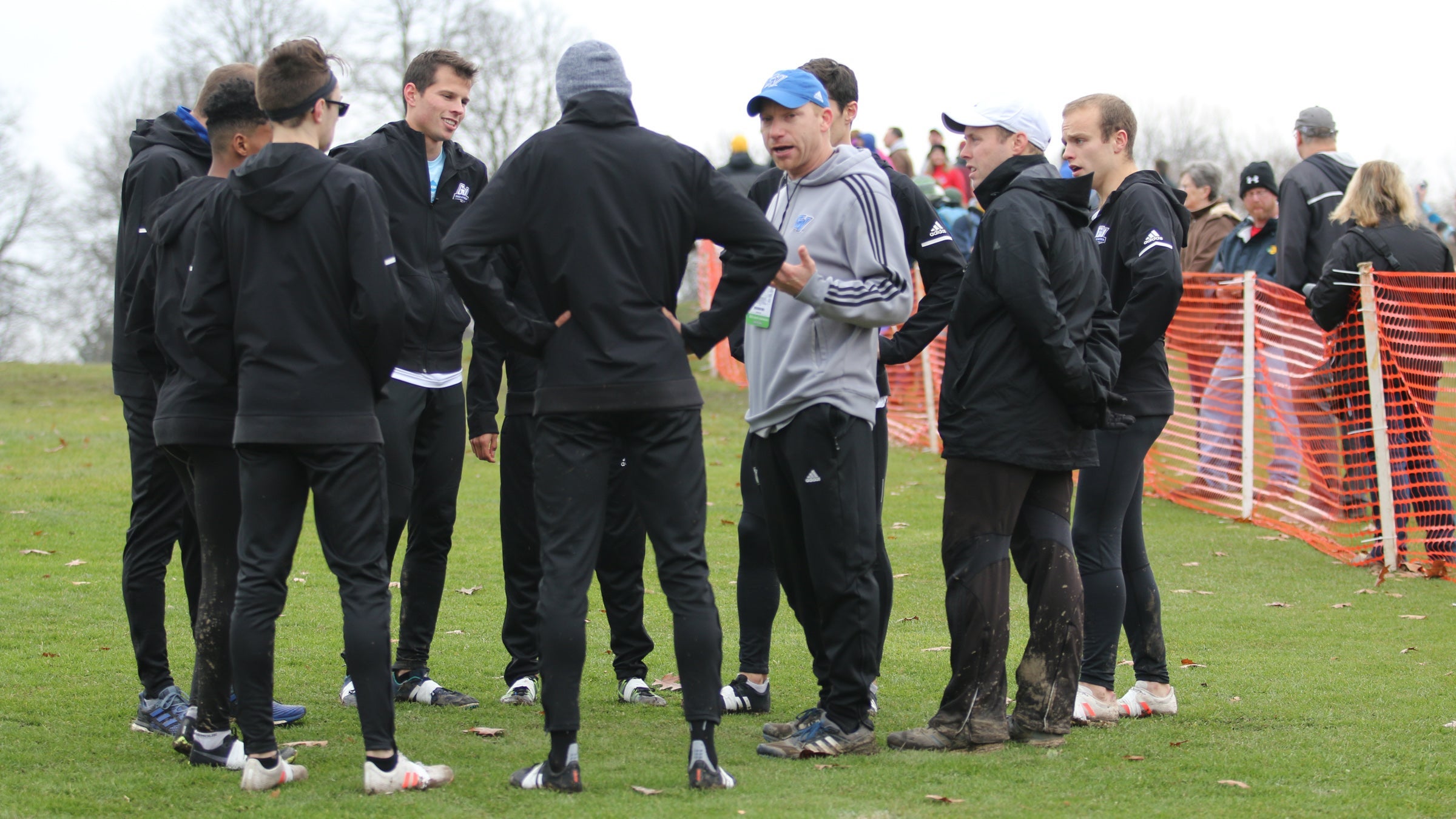When Atlanta Track Club data specialist Holly Ortlund began charting the colleges that 2020 Marathon Trials qualifiers had attended, one quickly stood out. Right behind Syracuse, Princeton, and University of Colorado—and ahead of a few hundred other schools—came the little-known Division II school, Grand Valley State University in Allendale, Michigan. GVSU had 10 qualifiers, 9 of whom will be running in Atlanta. We wondered why, and did a little digging.
Here’s what we learned. Head Coach Jerry Baltes has been at GVSU for 21 years. There, he emphasizes five core principles with his runners: school, running, family, work, and faith. This sort of consistency can lead to a winning tradition, and that’s what Baltes has accomplished. Last December, the school was singled out by the NCAA as one of the most dominant teams of the decade.
GVSU exercise physiologist Kyle Barnes has had a close-up view of the program for his seven years at the school. A 2:28 marathoner himself, he often trains with the runners.
“A lot of the success comes from the team culture,” Barnes observes. “They train really hard, but learn to love it. That’s why so many continue post-college. Much of the training is strength-based, so these men and women graduate with huge bases.”
From Jerry Baltes and his Trials-qualifying athletes, here are some of the foundational practices that have helped GVSU grads become successful marathoners.

1) Patience, Patience, Patience
Baltes likes to joke that he only let Courtney Peterson on the freshman team because he confused her with another runner he had met at a high school camp. Peterson admits she was no standout. “I actually didn’t make our top seven until my fourth and fifth years in school,” she says. “I was lucky to have supportive coaches who celebrated my little improvements, and helped me reach for bigger goals. No one improves overnight, so being patient and trusting the process was key.” Now 28, Peterson finished 106th in the 2016 Trials, and ran a 2:44:24 to qualify for the 2020 Trials.
2) Adjust, Learn, Change
Peterson’s husband, Alan, finished 82nd at the 2016 Trials and qualified for 2020 with the 2:14:56 he ran in Chicago last fall. He hasn’t always been so successful. In fact, he found his first semester at GVSU “devastating” when he succumbed to injury. This forced him to re-assess.
“I learned that I needed to prioritize what Jerry would call ‘the little things,’” recalls Alan, 28. “I had to work on my nutrition, my sleep, and getting to the training room more often. Once I got those things right, I had a pretty steady climb upward.
3) Pre-Hab is a Priority
Baltes is forever telling his runners that the best way to avoid injury and maintain training consistency is pre-hab. In other words, doing everything possible to prevent injuries before they happen. He’s tried everything, and believes that massage has produced the greatest benefit for his athletes. “And not the kind that feels good,” he notes.
Nate Orndorf found this a consistent theme during his years at GVSU. “Jerry made sure we got in the training room for icing, rolling out, and mending potential aches before they developed into injuries,” he says. “At least twice a week, he’d bring in a massage specialist for some deep-tissue work or other specific massage.” Orndorf, 25, qualified for the Trials with a 2:18:54 at last fall’s Indianapolis Marathon.

4) Get Stronger Every Way You Can
Long runs, hill runs, weight room—use ’em all. “Building a big aerobic base doesn’t come only from long runs,” says Baltes. “It takes training volume, plus the other stuff, which includes staying healthy.”
Jeannette Faber has never considered herself a speedster. “I had to lean on the strength we built, both in the weight room, and with regular hill repeats,” she says. “To this day, I use a weight circuit close to what we did at Grand Valley, and I lean heavily on hill repeats.” Faber, 37, qualified for the 2013 World Championships Marathon, has won eight marathons outright, and will be running her third Marathon Trials in Atlanta.
5) Learn to “Flip the Switch”
This is an expression Baltes uses to mean: You gotta go hard when you go hard, and relax and have fun at other times. Even if it means listening to his corny jokes. Jordan Chester was nervous about her first year at Grand Valley, given the program’s success. She assumed “the atmosphere would be cutthroat and fierce.” Nope, quite the opposite.
“Most practices were fun, and you were always smiling at the end of the day,” Baltes recalls. “This has been very important for me because I have a tendency to leave the switch ‘on’ for too long, and become too anxious. The coaches at GVSU taught us that you can become the best you can be while having fun doing it.” Chester, age 26, qualified for the 2020 Trials with a 2:44:23 in the 2018 Chicago Marathon.
6) If at First You Don’t Succeed … Try Something Else
Kendra Foley says that her training program at Grand Valley was constantly changing. “We tried low mileage-high intensity, we tried high mileage-low intensity, and we kept experimenting until we found the perfect formula for me,” recalls Foley, 26. That formula helped Foley run 2:43:11 at last year’s Indianapolis Marathon to qualify for the Trials.
She won’t be in Atlanta, however, as she’s currently a Notre Dame assistant coach, and will be guiding the team through the ACC Indoor Championships on February 29. “Coach Baltes and Coach Aaron Watson were so devoted to us at Grand Valley that I will always put my coaching job and my team first,” Foley says.
Even for the coach, learning never stops. “I consider myself a teacher first,” says Baltes, “and that means we’re always learning. There are a lot of ways to combine the Xs and Os in running, and we don’t want to get set in our ways. We’re always willing to adjust and adapt.”

7) Run with a Big Heart
Baltes has a favorite super-tough workout that he has used with his teams through the years. It’s called “The Roho.” Roho is a Swahili word that means “big heart” or “big spirit.”
The workout goes something like this:
• Fast mile on the track
• 1.5 miles tempo pace on dirt
• Fast 1200m on the track
• 1.5 tempo pace on dirt
• Fast 800m on the track
• 1.5 tempo pace on dirt
“We usually did this twice every cross-country season,” says Alan Peterson. “It had a whole special atmosphere surrounding it—you knew you had to be ready for it. Roho taught me to be comfortable with being uncomfortable, especially when we would go sub-4:30 for the mile, and still have 10K of work left to do.”


